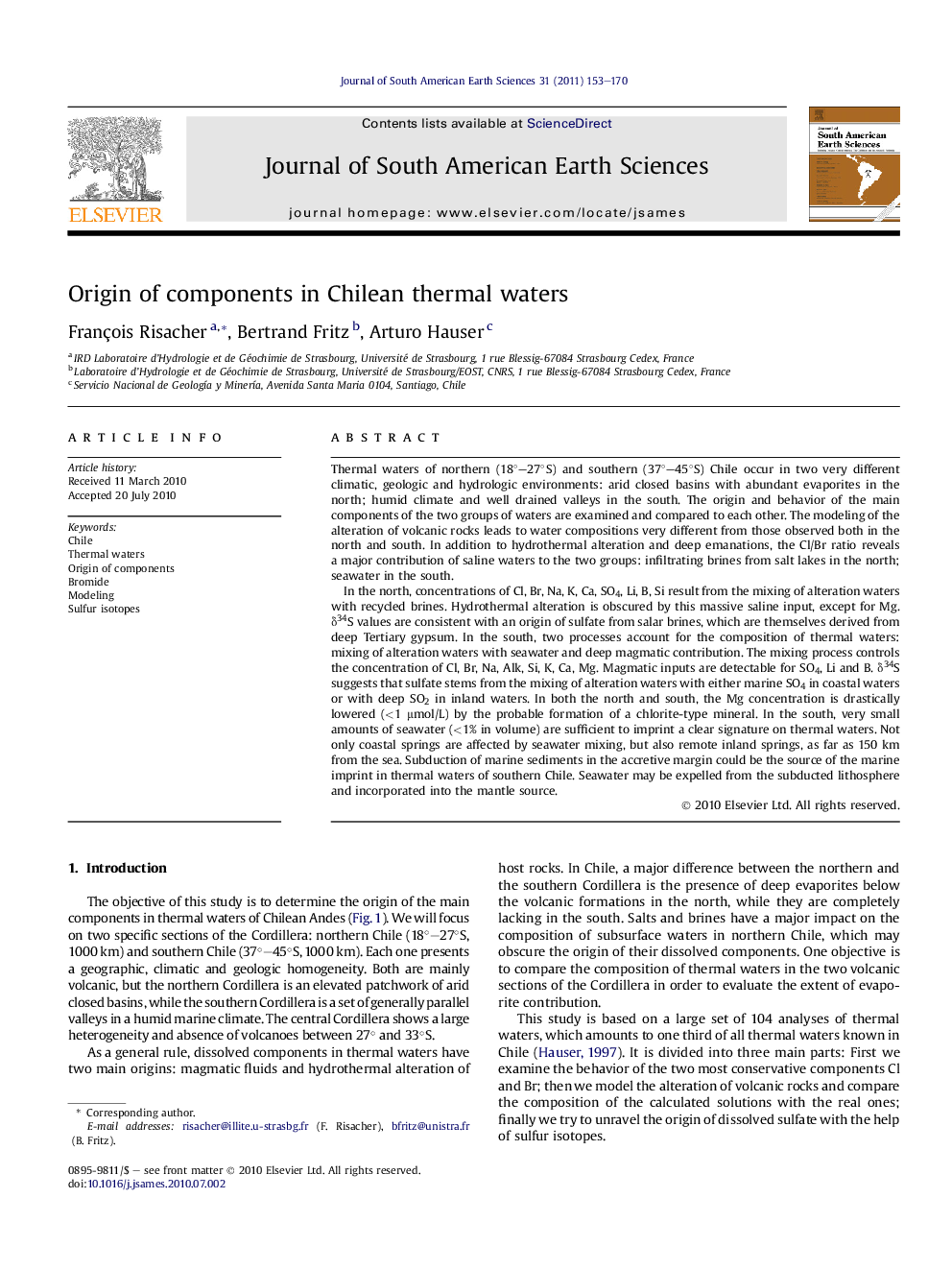| کد مقاله | کد نشریه | سال انتشار | مقاله انگلیسی | نسخه تمام متن |
|---|---|---|---|---|
| 6431507 | 1348926 | 2011 | 18 صفحه PDF | دانلود رایگان |

Thermal waters of northern (18°-27°S) and southern (37°-45°S) Chile occur in two very different climatic, geologic and hydrologic environments: arid closed basins with abundant evaporites in the north; humid climate and well drained valleys in the south. The origin and behavior of the main components of the two groups of waters are examined and compared to each other. The modeling of the alteration of volcanic rocks leads to water compositions very different from those observed both in the north and south. In addition to hydrothermal alteration and deep emanations, the Cl/Br ratio reveals a major contribution of saline waters to the two groups: infiltrating brines from salt lakes in the north; seawater in the south.In the north, concentrations of Cl, Br, Na, K, Ca, SO4, Li, B, Si result from the mixing of alteration waters with recycled brines. Hydrothermal alteration is obscured by this massive saline input, except for Mg. δ34S values are consistent with an origin of sulfate from salar brines, which are themselves derived from deep Tertiary gypsum. In the south, two processes account for the composition of thermal waters: mixing of alteration waters with seawater and deep magmatic contribution. The mixing process controls the concentration of Cl, Br, Na, Alk, Si, K, Ca, Mg. Magmatic inputs are detectable for SO4, Li and B. δ34S suggests that sulfate stems from the mixing of alteration waters with either marine SO4 in coastal waters or with deep SO2 in inland waters. In both the north and south, the Mg concentration is drastically lowered (<1 μmol/L) by the probable formation of a chlorite-type mineral. In the south, very small amounts of seawater (<1% in volume) are sufficient to imprint a clear signature on thermal waters. Not only coastal springs are affected by seawater mixing, but also remote inland springs, as far as 150 km from the sea. Subduction of marine sediments in the accretive margin could be the source of the marine imprint in thermal waters of southern Chile. Seawater may be expelled from the subducted lithosphere and incorporated into the mantle source.
Research highlights⺠Seawater is a major source of components in Chilean thermal waters of southern Chile. ⺠Salar brines are a major source of components in Chilean thermal waters of northern Chile.
Journal: Journal of South American Earth Sciences - Volume 31, Issue 1, February 2011, Pages 153-170